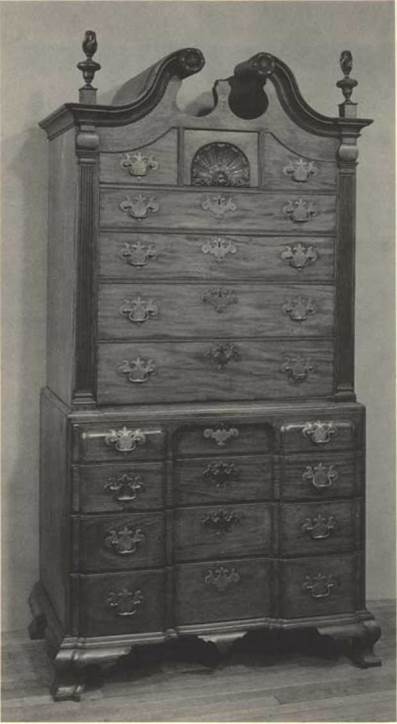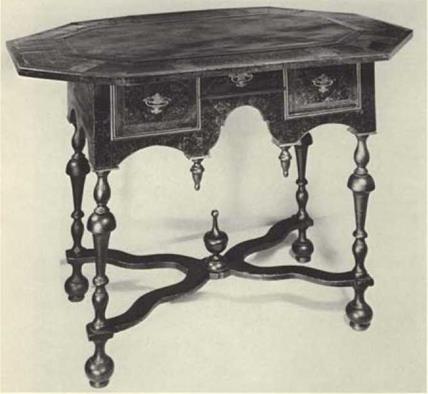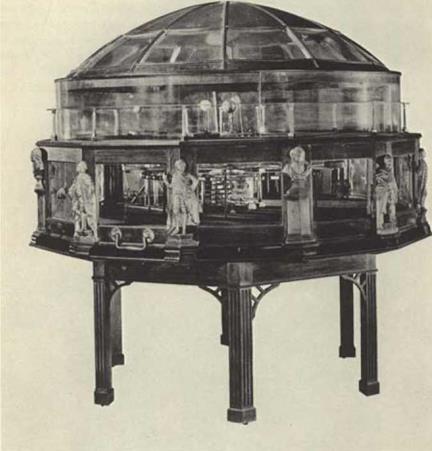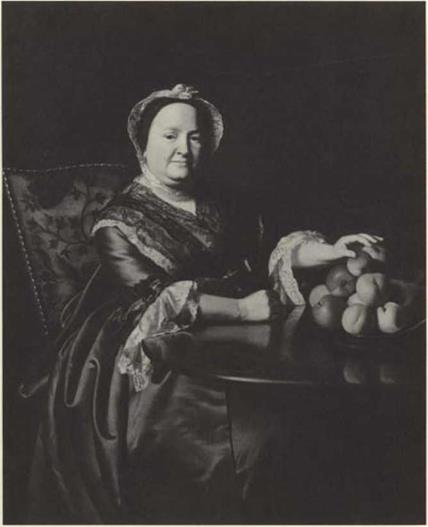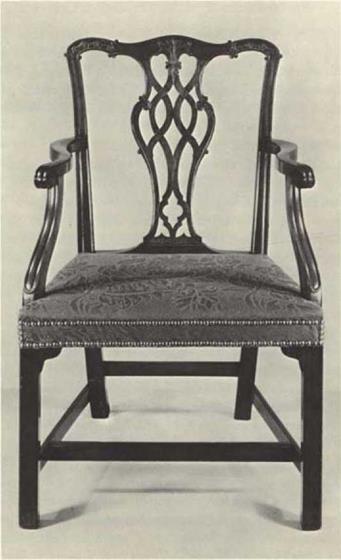|
В |
" O ST О К furniture of the eighteenth century has long inrer- , ested informed collectors and students of furniture history. Yet, no book has been devoted to die subject. While catalogues and scholarly works have appeared on die eighteench-ccntury furniture of New Hampshire, Rhode island, Connecticut, New York, New jersey, Pennsylvania, Maryland, and South Carolina,1 little has been written oil Massachusetts and particularly Boston. Today such an obvious research need in the field of American art does not long remain fallow. Even before this book was begun, preliminary work had commenced. In 1948 Mabel Swan published the first major list of Boston craftsmen,2 Subsequent researchers such as Rkh-
l. Major regional studies і» in chronological order by stain T)u Deeorative Am of №u’ Hampshirt :j2y-iSi} (Mjiidirttrt, New Hanipilutc, 19645; Tht Иям/іи Arts of Near Hampshirt: A Scsipticmtcnmal Exhibidem (Concord, New Hampshire, 197JJ: Ralph E. Carpenter, Jr., The Arts and Crafts of Newport, Rhode Island, 1640^1 Й10 (Newport, Ithode bland, 1954); ‘Hie John Лгоііяі Home Loan Inhibition of Rhode Island Furniture (Providence, Rhode Island, Three Centuries of Conneeticut furniture
I^JIWWJ (Hartford, Connecticut, Cmsnrrfj’mt Furniture, Sevenflemlft and FJgh-
leenlh Centuries (Hartford, Connecticut, 1967); Joseph IDowm and Ruth Ralston, A. Lunin Cifriiiltoir of ‘eur York State Furniture (New York, 19J4); V. Isabelle Miller. furniture iy York Cabinetmakers, l6$0-i$6a (New York, 19jS); №ti’ Vsri Funjj – .f ure brforc 1840 rn file Colieetion of the Albany Institute of Hbtory and Art (Albany, 19615; MlTga’Ct E – White. Early Furniture Made m New Jersey, 1 (jtH Sjtt (Newark, New Jersey, 195Й); William M. Homor, Jr., Bine BecA, Philadelphia Funn’jjjrr.- U’itliam Prut to CfOFff Washingltm (Philadelphia, 19 J5); Вайіррпие FurailuPf: The Work of B. rjjjjpioie and Annapolis СдАі’лґірнлЕги^uppp іубо to iStO (Baltimore, 1947); Williatll Voss Elder Ш, jW, pry. rpjpi,1 Queen Anne and Chippendale Furniture of fAr Eighffendl Century (Baltimore, 1966}: E. Milby Burton, Charleston Furniture, 170&-1823 (Charleston, South Carolina, IpSS).
1, Mabel Munson Swan wrote numerous articles on New England furniture of the eighteenth century. Her most important study of Boston is a two-part arricte entitled "Boston’s Carvers and Joiners," Antiques, liii (March and April, ly+S), 198-JOI, j8i – aKi, Other material by Mabel Swan is died in a bibliography at the end of this volume.
|
|
t. Chfst-on-Chest, Made by Benjamin Frntliinghvn (paper label), Charlestown, Mimchusciis, c. 1765-1790. Mahogany and white pine; и. SS’/j inches, w. 45Vi iiichti, D. 2 j inches. (Private collection.)
vii
 ard Randall, Benno Forman, and Vernon Stotietnan have contributed to the picture of the Boston furniture industry,[1] More recently four students m the Winterthur Program m Early American Culture, Brock Jobe, Margaretta Lovell, Gilbert Vincent, and Mary Ellen Ychia, began to examine various aspects of the subject.
ard Randall, Benno Forman, and Vernon Stotietnan have contributed to the picture of the Boston furniture industry,[1] More recently four students m the Winterthur Program m Early American Culture, Brock Jobe, Margaretta Lovell, Gilbert Vincent, and Mary Ellen Ychia, began to examine various aspects of the subject.
In 1972 the Colonial Society of Massachusetts offered to sponsor the conference "Boston Furniture of the Eighteenth Century’’ as their second annual meeting ОП early New England culture. At their first conference, chaired jointly by Sinclair Hitchings and Walter Muir Whitehall, eight papers were presented on Boston prints and subsequently published in Boston Prints and Printmakers volume +6 of the Publications of the Colonial Society’ of Massachusetts. for the furniture conference, the Colonial Society turned ro the newly established Department of American Decorative Arts and Sculpture at the Museum of Fine Arts, Boston, Jonathan Fairbanks, Curator of the Department, with the encouragement and advice of Walter Muir Whitehill, developed the format for the conference. Eight speakers were invited and an exhibition of Boston furniture was planned to coincide with the conference. Although focussing on Boston proper, the co-ordinators of the conference chose 10 include a paper on Benjamin Frothingham of Charlestown because of the numerous pieces of extant furniture signed or labelled by this important Boston area craftsman (fig. 1).
On May 11,1972, the conference opened at the headquarters of the Colonial Society at 87 Mount Vernon Street. After introductory remarks by Walter Muir Whitehill, papers were presented by Brock
Jobe and Mary Ellen Yehia. During the afternoon, conference members moved to tlie Museum of Fine Arts to hear lectures by Gilbert Vincent and Margaretta Lovell and to view the exhibition “A Bit of Vanity, Furniture of Eighteenth-Century Boston." Many documented examples were brought together in Gallery T-2, including a William and Mary style slate top table (fig. 2), a desk-on-frame and pier table (fig. з), both with mask-carved knees, and a block ft out chest of drawers originally owned by Thomas Lamb (c, i753-iflij) of Boston (fig. 4). Unfortunately one of the best-documented and most unusual pieces of Boston furniture, an enormous orrery made by Joseph Pope between 1776 and 17»S (fig, 3), could not be moved from the basement ol Houghton Library, Harvard University, to the
|
2. DsessincTahle. Poston area, c, 1700-17:0. Wdnut, white pine, andiLit; h. 30% inches, W. 44% inches, n, 301 j inches – (Dietrich Brother? Americana Corpora lion: photo, Richard Check. 1 Aiiording to family traJition, this table was owneJ by Thomas Hinckley (161S-1706) of Barnstable, Massachusetts. |

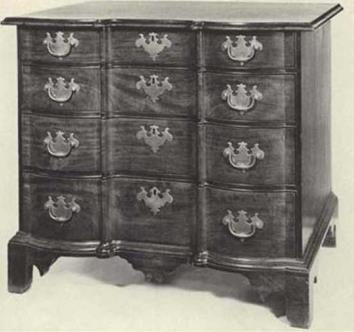 |
3. РіЕЧ Table. Boston area, t. 1740-177D. Mahogany and white pine; H. 2.9 inches, w. z%’/i inches, I). 17% inches. (Museum of fine Arts. Boston, M. and M. К.1 roll к Collection. 41.3 SO.)
4. Chest Of Dr л writs. Boston, c. 171S0-1790. Mahogany and white pine: 11. jo inches, «, і6 inches, n. 21-% inches. (Private collection; photo, Richard Cheek.) According to family tradition. this chest was ou/rled by Thomas Lamb (с, 17JJ-liftj], я гиєїїЛшгг of Boston.
|
5. ОивіїН V. Mudc by Joseph Pope, БечГОП, 1776-17ЯЯ, Mahogany; it. ?K inches. Diameter 7Я inches, [Historical Scientific Ьшгшплк» Collection, Harvard University.) In Aiafth, lyfy, Hat – vard College purchased this orrery from Pope for |
Museum. Portraits by Robert Poke, Joseph badger, and Joint Singly ton Copley (fig. 6) enriched the exhibition with views of friendly, confident faces and costly, decorative furniture.
On May 12, the participants in the conference returned to the Colonial Society headquarters to listen to papers by Richard Randall. Gordon Sal tar, Sinclair (ditchings, and Dean Tales. The conference
Foreword xi
ended with a luncheon at the Club of Odd Volumes, 77 Mount Vernon Street.
Tliis book, issued as volume 4ІІ of the Colonial Society’s fhib/ira – tions, contains the papers presented at the conference.4 Many were
|
4- Gordon Silur whn spoke on wood analysis M an jid to the Study of New England furniture submitted die must useful роліол) of his highly ipecialized piper fur pLlblicidnn; a list of Now England cabinet woods and an iissiutited bibliography on the itfenuficatiun of woods.
|
6. Mss. Eiuilx. Goldthvait. Painted by John Singleton Copley, Boston. 17701771. Oil on can vas; si. jo inches, w. 40 inches (excluding frame]. (Museum of Fine Am, Host on. Bequest of John T. Bowen in memory of Eliza M. Bowen, 41. S4.)
transformed afterwards by additional research stimulated by the lively exchange of thought generated at the conference. A list and bibliography of furniture craftsmen working in Boston during the eighteenth century hive been added as appendices.
Photographs of 132 objects appear throughout the volume to amplify the text. While many have been illustrated before, never has such a large number been compiled for one publication. Some arc shown here for the first time: a pair of armchairs (fig. 7) owned by Thomas Lamb of Boston and stamped “S. F," probably the initials of the chairmakcr.5 an early blockfront bureau table with string inlay (fig. 18), and a bombe desk and bookcase signed in pencil by Benjamin Frothinghatu and D. Sprage and dated 1753 (figs. 97 and 1Л2}. Partly as a result of the increased interest generated by die conference. one of the most important but rarely seen pieces of Boston furniture, a chest-on-chcst signed by John Cogswell, was acquired by the Museum of Fine Arts and is handsomely illustrated in color in figure 123.
The purpose of the conference was to foster comparison and distribution of recent scholarship. In doing so, it provided new insights into Boston eighteenth-century furniture and summarized past information in light of modem discoveries. It also pointed towards further research needs in the field. The study of Federalist Boston (c. 1788-1815) and its furniture has hardly begun, Little is known about the introduction of the neoclassical style in Boston, the influence of Boston furniture of die Federal period on other urban centers such as Salem, and the changing craft practices in late eighteenth – century Boston. For the entire century many questions remain unanswered. What was die relationship between Boston craftsmen and those in surrounding towns? What effect did the Revolution have 011
J. A side chair Itld lolling chair in the Winterthur Museum bear the stamp; of Stephen Badl-irn. s cabinetmaker of Dorchester, and the unidentified S. F. Charles Montgomery speculated [hit S. F. may have been [lie initials of a Boston journeyman working for HadLini during the 17001. A likely candidate is Samuel Fisk, a Boston cabinetmaker who died in 1757. Ourl» F, Montgomery, Amtriam Furniture, the Federai РеггиJ in rlie Henry Ftmub dii Pont Winterthur Мшеит (New York, пгГл), тим, jo. 110.
|
|
7. Аьмснлів. Stumped "’S. F’* (probably (he ui&ab of the maker)* Boston. c. 1770-1795, Mahogany and maple; її. jjAj inches, w. 1; inches, d. л inches. (Misscimi «Г Fine Arts, Hatton. fiift of the Misses Aimee and Rosamond Lamb, iii memory of Miss Rose Lamb, 1572.3271 photo, Richard Cheek.) Ліїі’гЛіу to Jamtly tradition, this chair was owned by Thomas Lamb (c. 175 a merchant aj Boston,
the furniture industry? How influential were patrons in determining style changes in Boston? What effect did imported furniture have on Boston styles? This booh is but a beginning—a beginning, it should be added, that emphasizes die Queen Anne and Chippendale periods (c. 1725-1788) ,It is hoped that as a result of this effort more information will become available and eventually a more comprehensive history’ of the furniture trade will be written.
It is curious that in our twentieth-century push-button age precise knowledge about the past still generates slowly, Patient sifting, sorting, and gathering of facts for this volume came about because many persons willingly contributed their talent, time, and effort. The Colonial Society of Massachusetts must be credited with providing the impetus for the conference. The Henry Francis du Pont Winterthur Museum, its research facilities, library, staff and certain fellows and graduates also did much to make the conference possible. Advice from Albert Sack of Isract Sack, Inc., was essential in preparing the Boston furniture exhibit at the Museum of Fine Arts. Lu Bartlett, Assistant to the Curator, with the assistance of the foil owing graduate students from Boston University’s American and New England Studies Program installed the exhibit and wrote die captions for the catalogue: Anne Faniarn, Sheridan Germann, Joyce Goldberg, John Hcrzan, Mary Beth Horn beck, Eugenia Kaledin. Robert Mac Kay, Betsy Mankin, Brian Pffcifcr, Clarissc Poirier, Ned Reynolds, and Mary Ellen Ychia.
Several persons loaned or helpixl to arrange for loans of articles 10 the exhibition. Charles F. Montgomery, who constantly supported and encouraged the conference, provided several important objects from die Yale University Art Gallery’, Dietrich Brothers American» Corporation, William du Pont, Mr. and Mrs. Edward C. Johnson, John P. Kinsey, the Misses Aim£c and Rosamond Lamb, the Massachusetts Historical Society, and Israel Sack, Inc., loaned pieces of furniture for die show,
The content and organization of this book were improved by the assistance of six readers: Barry Greenlaw, Morrison Heck slier, Darrell Hyder, Myma Kaye, Andrew Oliver, and the late Clifford Ship-
Foreword
![]() ton* Darrell Hyder and Barbara Jobe ably provided special editorial work for individual articles.
ton* Darrell Hyder and Barbara Jobe ably provided special editorial work for individual articles.
The list of furniture craftsmen at the end of this volume was compiled by many different individuals. Brock Jobe completed research on craftsmen active between 1725 and 1760. Myma Kaye with the assistance of Eleuthera du Pont, Carole Kamath, E Iodic Lora am m. Lee Mobbs, Mary Noonc, and Priscilla Sloss compiled і 11 formation on craftsmen working at the beginning and end of the century’. Myma Kaye then prepared die entire list for publication in this volume and Joyce Goldberg added a bibliography of books and articles on Boston eighteenth-ccntury furniture craftsmen.
Innumerable details of putting this volume in order were conducted with vigor by Brock Jobe as part of his internship experience in Boston University’s American and New England Studies Program* We gratefully acknowledge not only his major contribution to the content of this volume, bur also his great ability to direct essential correspondence and photographic needs down to the last detail. As ready assistants helping with every’ need throughout the final six months of the project, Eleuthera du Pont and Lynne Spencer arc to be thanked as well.
Design of this volume and its fmal appearance are due to the combined talents of Roderick D. Stinehour of The Stinchour Press and E, Harold Hugo of The Meriden Gravure Company, both of whom participated in the conference.
Waltef Muir Whiteiiill
Bitter
Brook Jobe
liJilorint Assistant
Jonathan Fairbanks Сипім of American Decorative Am and Sculpture Museum of Fine Arts, Baste ti
F о r т н i s publication’ the geograph ieal borders of Boston arc defined according to their eighteenth-century limits. Boston, a hilly, treeless peninsula, was bounded On the north by the Charles River, on the west by extensive salt marshes, on the south by a neck of land linking the peninsula to the Roxbury mainland, and on the cist by the harbor and mud flats (fig. B}, Five towns, Dorchester, Roxbury, Brookline, Cambridge, and Charlestown, encircled the peninsula on three sides. Craftsmen from surrounding towns, no doubt, produced furniture quite similar to Boston examples. For this reason, only documented pieces of Boston furniture are ascribed to *Boston" in the captions while those with similar characteristics but lacking histories or makers’ marks are identified as "Boston area.’1
!n the captions signed or labelled examples are identified by the term "made by," The work of Benjamin Frothingham is further divided by type of documentation: paper label, ink inscription, signature in pencil, or signature in chalk. Attributions arc based on well-documented histories or specific stylistic and constructional evidence. Circa dates (designated as "c,”) arc used for examples wiihout a precise date of manufacture. The identification of woods is based on visual analysis. The primary wood is listed first, followed by secondary wroods and other materials. Different views and details of an object are noted. Complete information is provided only for the primary illustration, usually an overall view. Special caption comments have been contributed by individual authors foe certain objects.
All dates appearing in the captions and text arc in Old Style, but with January t being used as the beginning of the year rather than March 23 for the period before 175 г. Thus a date of January 10, 1728/9 becomes January 10, 1729. The original spelling of manuscript material is retained in all quotations; however, superior letters have been brought down to the line. Monetary values before 1750 axe listed in Old Tenor; those afterwards arc in the devalued currency. Lawful Money.

